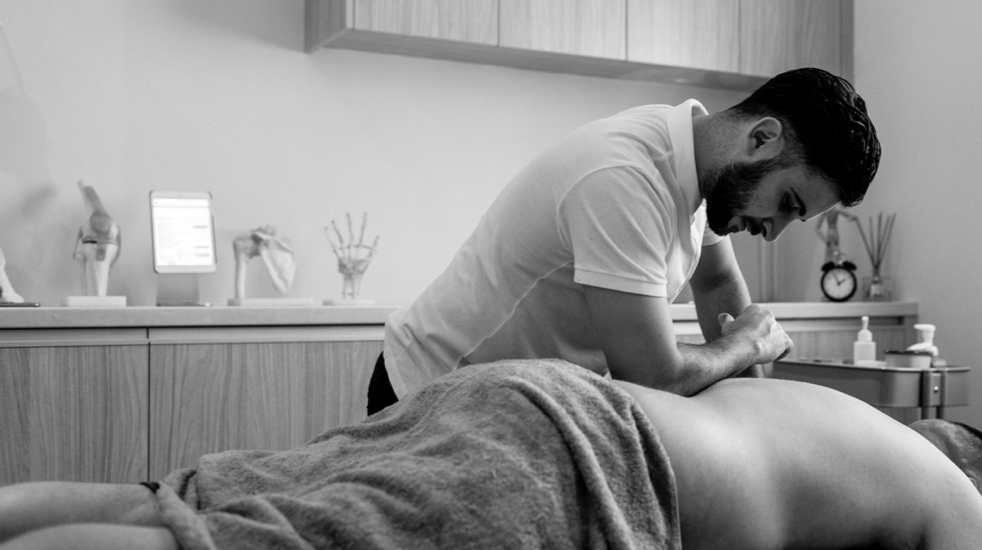Home Office Stretches
The human head accounts for approximately 9% of your total body weight and is supported by the skinniest part of the spine, your neck. This seemingly flawed design of our head and neck is actually what enables the freely moving head we all have. The big and subtle movements of our head and neck are controlled and supported by hundreds (yes hundreds!) of face, neck and shoulder muscles, which is why it is so often a source of aches, pains and problems.


It’s not about adopting the “perfect posture” while working from home, especially for an entire 8 to 10-hour workday. It’s about moving the neck “little and often” and in lots of directions. Starting a 5-minute work from home desk protocol can be something built into your workday and developed into a habit.
The stretches in a 5-minute desk protocol should focus on moving the joints and stretching the muscles of the neck to trigger a “reset” of sorts so you can get back to work with less pain and stiffness.
Stretch 1: Shoulder blade squeeze
Standing or sitting up in your chair with your chin slightly tucked and shoulders back, slowly squeeze your shoulder blades together as though squeezing a pencil between them. The force of your squeeze shouldn’t cause any pain and can be held for 3-5 seconds. Repeat x5.
Why? Pulling the shoulders back allows your body to redistribute the mechanical forces in your spine, particularly your neck and mid-back. Keeping your back muscles active is important as they enable a more upright spine while working from home, meaning less back and neck pain.
Stretch 2: Chin tucks
Standing or sitting up in your chair with your back and neck straight, make sure your shoulders are back slightly. Tuck your chin in until you feel a mild to moderate pain-free stretch. Keep your eyes and nose facing forward. imagine as though your head is being pulled up, lengthening your neck. Hold for 3-5 seconds and repeat x5.
Why? As the weight of your height becomes too much for your neck to support in an upright position, it gradually moves forward into what we know as the “poked chin” position. Tucking your chin back activates tiny muscles under the chin to keep your head back on your shoulders, reducing the pressure on the joints and muscles, particularly those at the base of your skull.
Stretch 3: Levator Scapula Stretch
Begin by sitting on your hand, with your back and neck straight. Your shoulders should be back slightly. Gently bend your neck forward and away from the arm you’re sitting on and use your free hand to take your head a little further, increasing the stretch. It should only be a mild to moderate pain-free stretch. Hold for 5 seconds, repeat x5 on each side.
Why? The levator scapula muscle’s main role is to keep your shoulder blade in position to help support your head and neck alignment. Long periods of sitting can cause this muscle to fatigue, meaning it resorts to tightness as a way of stabilising the shoulder blade. The stretch acts as a reset and provides some relief of that tight neck feeling.
Stretch 4: Scalenes stretch
Sit with your back and neck straight and your shoulders slightly back. Turn your head looking over one shoulder and use your fingers to gently push your head a little further. Now slightly tilt your head backward until you feel a mild to moderate pain-free stretch. Keep your neck straight and don’t allow your head to poke forward during the movement. Hold for 5 seconds and repeat x5 on each side.
Why? The scalene muscles are important in supporting the healthy alignment of your neck and are prone to tension when they are overused in an incorrect position. Stretching these muscles is a helpful way of resetting the neck and providing some temporary relief while sitting at the computer.
Putting these stretches into a 5-minute protocol throughout the day will help keep you feeling well and mobile. If you’re having trouble or are feeling pain with the stretches, makes sure you make an appointment to come see us! We are always here to help.




